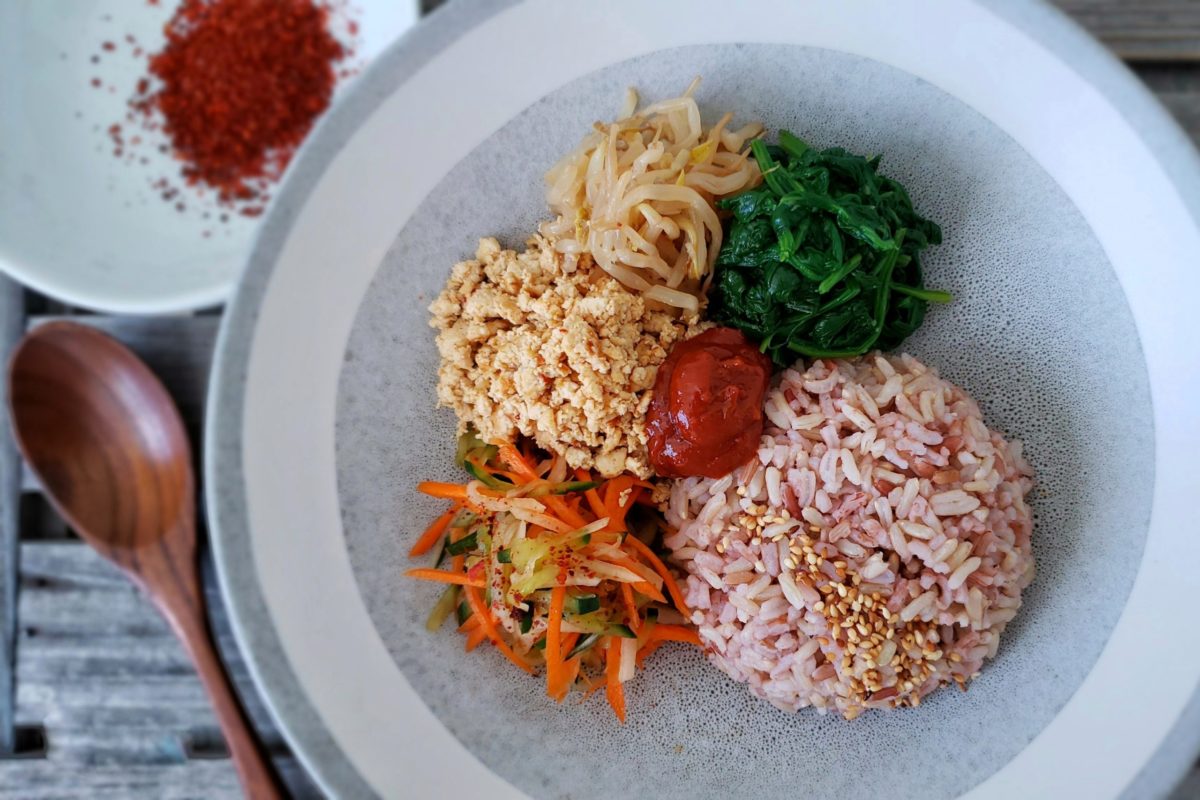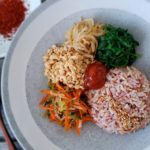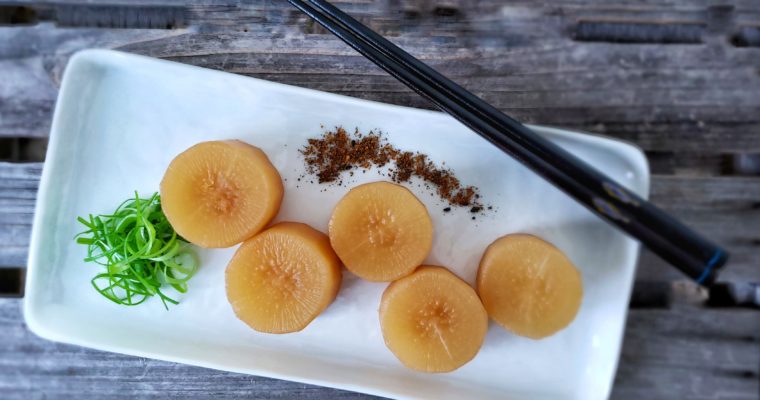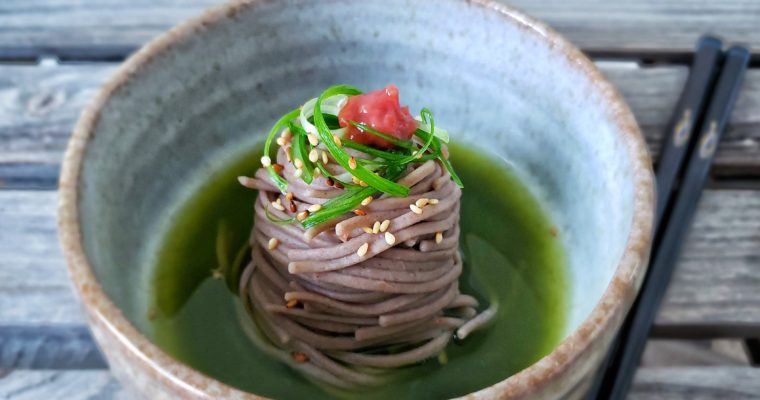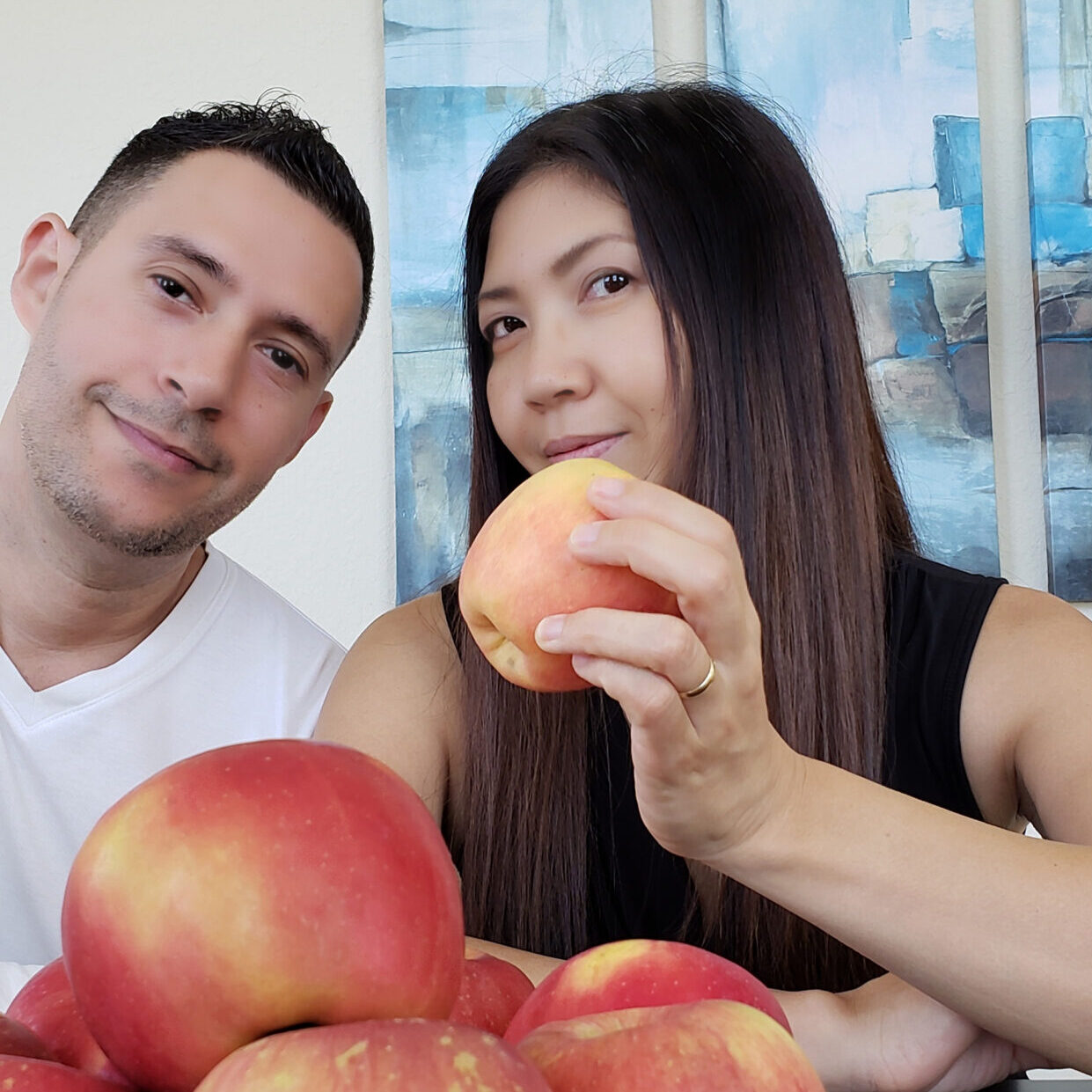Last Updated on June 3, 2023
Bibimbap is probably one of the most popular Korean dishes! It’s a big bowl with rice, various veggies, protein, and sauce. Our vegan Bibimbap has a unique blend of rice, original but tasty and easy-to-make toppings with the Korean flavors that you are familiar with. It’s warm, savory, garlicky, spicy, and sweet. With all the different components and the flavors, it’s just as satisfying as the traditional one!
Bibimbap
The word “bibim” means mixing various ingredients, and “bap” means rice. So It’s a mixed rice dish!
Common components of bibimbap are white rice, various vegetable namul, gochujang, kimchi, some type of meats (cooked or raw), and fried-egg (or raw egg yolk.) Our recipe is 100% vegan so no meat and egg!!
Bibimbap is typically served in a stone pot and it’s piping hot! The rice gets crunchy at the bottom and you just can’t help but to mix it to get all the flavors and the textures in one bite! We wish we had the traditional stone pot but for now we simply serve it in a regular bowl.
Fun Fact: In Japanese culture, with some exceptions, mixing a bowl (stirring up all the components in a bowl) may be considered a childish behavior and not so well mannered thing to do at the table.
The Rice
For 99 % of times, we use short grain white rice (starchy short grain rice) for Japanese, Korean, and Chinese dishes. Bur for this bibimbap, we switch up to Organic Tricolor Blend Rice from Lotus Foods (previously sold as Volcano Rice.) According to the description on their website, “Tricolor Blend Rice is a colorful blend of prized traditional brown and red heirloom rice grown on West Java’s mineral-rich volcanic soil. Fragrant and nutrient-dense, Tricolor Blend Rice cooks in only 30 minutes producing moist and tender grains with an aromatic hint of vanilla.”
It’s completely different than the traditional short grain rice but it gives a pleasant nutty flavor without overpowering. And best of all, it’s not completely dry so it pairs very well with bibimbap. When it’s cooked, it has a pretty pink color to it where it’s visually pleasing as well! So, we purposely plate the dish in a non-traditional way to highlight the color!
Toppings
- Quick Pickle
- Bean Sprouts Namul
- Spinach Namul
- Ground “meat” Tofu
We like our bibimbap toppings to have cooked and uncooked components. For the uncooked component, we prepare quick pickle using English cucumber, daikon radish, carrot, gochugaru, salt, and sugar. You can also add rice vinegar if you like some acidity. Just mix all the ingredients together and let it pickled. Easy!
For the cooked one, we prepare two different types of namul. Namul is a sauteed and seasoned vegetable dish and typically seasoned with these common ingredients such as garlic, toasted sesame oil, soy sauce, salt, sugar, vinegar, gochujang, gochugaru, and doenjang. For this bibimbap, we season our namul super simple only with a few ingredients; soy sauce, toasted sesame oil, garlic, and salt. Namul can be made ahead of time! You can make more than what the recipe calls for and store in the fridge.
Another cooked component is the “meat” part. Our vegan version has ground tofu seasoned with gochujang, soy sauce, sugar, garlic, salt and toasted sesame oil. Gochujang gives a complex flavor to the tofu so you just need a few more ingredients to add more dimensions.
Feeling Inspired?
Check out our other Korean inspired creations!
Stir Fry Bibim Guksu (Korean Spicy Mixed Noodles)
Bibimbap (Korean Mixed Rice)
Ingredients
Quick Pickle
- 1 cup julienned English cucumber
- 1 cup julienned daikon radish
- 1/2 cup julienned carrot
- 1 tsp gochugaru
- 1/2 tsp salt
- 1/2 tsp sugar
Rice
- 1 cup uncooked Lotus Foods Organic Tricolor Blend Rice (or use any other rice of your choice)
- 1 1/2 cup water (adjust accordingly to your choice of rice)
Bean Sprouts Namul (Topping)
- 8 oz bean sprouts rinsed
- 1 tsp soy sauce
- 1 tsp toasted sesame oil
- 1/2 tsp garlic paste
- 1/4 tsp salt
Spinach Namul (Topping)
- 8 oz mature spinach (if not available, use baby spinach), rinsed
- 1 tsp soy sauce
- 1 tsp toasted sesame oil
- 1/2 tsp garlic paste
- 1/4 tsp salt
Ground “meat” Tofu (Topping)
- 1/2 block (8 oz) super firm tofu, crumbled
- 1 tbsp toasted sesame oil
- Sauce Mixture
- 2 tsp gochujang
- 1 tsp soy sauce
- 1 1/2 tsp sugar
- 1/2 tsp garlic paste
- 1/2 tsp salt
- 1 tbsp water
Toppings
- Gochujang
- Toasted sesame seeds
- Kimchi (optional)
Instructions
- In a large prep bowl, combine English cucumber, daikon radish, carrot, gochugaru, salt and sugar. Mix well and set aside.
- Start preparing rice. Place rice in a fine mesh colander. Rinse under running water until water becomes clear. Drain well. In a small to medium pot with a heavy lid, combine rice and water. Cover and cook on high heat to bring it to boil, then reduce the heat to low. Let it simmer for 30 minutes. After 30 minutes, turn off the heat and let it stand for 10 minutes (covered.)
- In the meantime, prepare all the toppings. Boil water in a medium pot. Cook bean sprouts for 2 minutes. Drain using a fine mesh colander. Let it cool down for 5-10 minutes then squeeze out the excess water. Rinse the pot and use it for making another topping in the next step.
- While bean sprouts are cooling down, use the same pot to bring water to boil. Cook spinach for 2-3 minutes (if using baby spinach cooking time should be shorter.) Drain using a fine mesh colander. Let it cool down for 5-10 minutes then squeeze out the excess water. For mature spinach leaves or larger leaves, cut into smaller size.
- Make bean sprouts namul. In a small bowl, combine bean sprouts, soy sauce, toasted sesame oil, garlic paste and salt. Mix well and set aside.
- Next, make spinach namul. Take the cooked spinach and follow the same process as step 5.
- At this point the rice should be close to getting done. While the rice is at the last stage of cooking process, start preparing ground tofu. In a small bowl combine gochujang, soy sauce, sugar, garlic paste, salt, and water. Mix well and set aside. Heat up a non-stick frying pan at medium high heat. Pour toasted sesame oil and add tofu crumbles. Cook for 2 minutes then add the sauce mixture. Stir well and cook for another 2-3 minutes. Set aside.
- The rice should be done at this point.
- Assemble the dish. In a bowl, serve rice on the bottom, then top with pickles, bean sprouts & spinach namul, and tofu crumbles. Add a drop of gochujang and a sprinkle of toasted sesame seeds on top.
- Mix together to eat!!
Notes
- No Tricolor Blend Rice available? No, worries! You can substitute with any traditional short grain rice of your choice.
